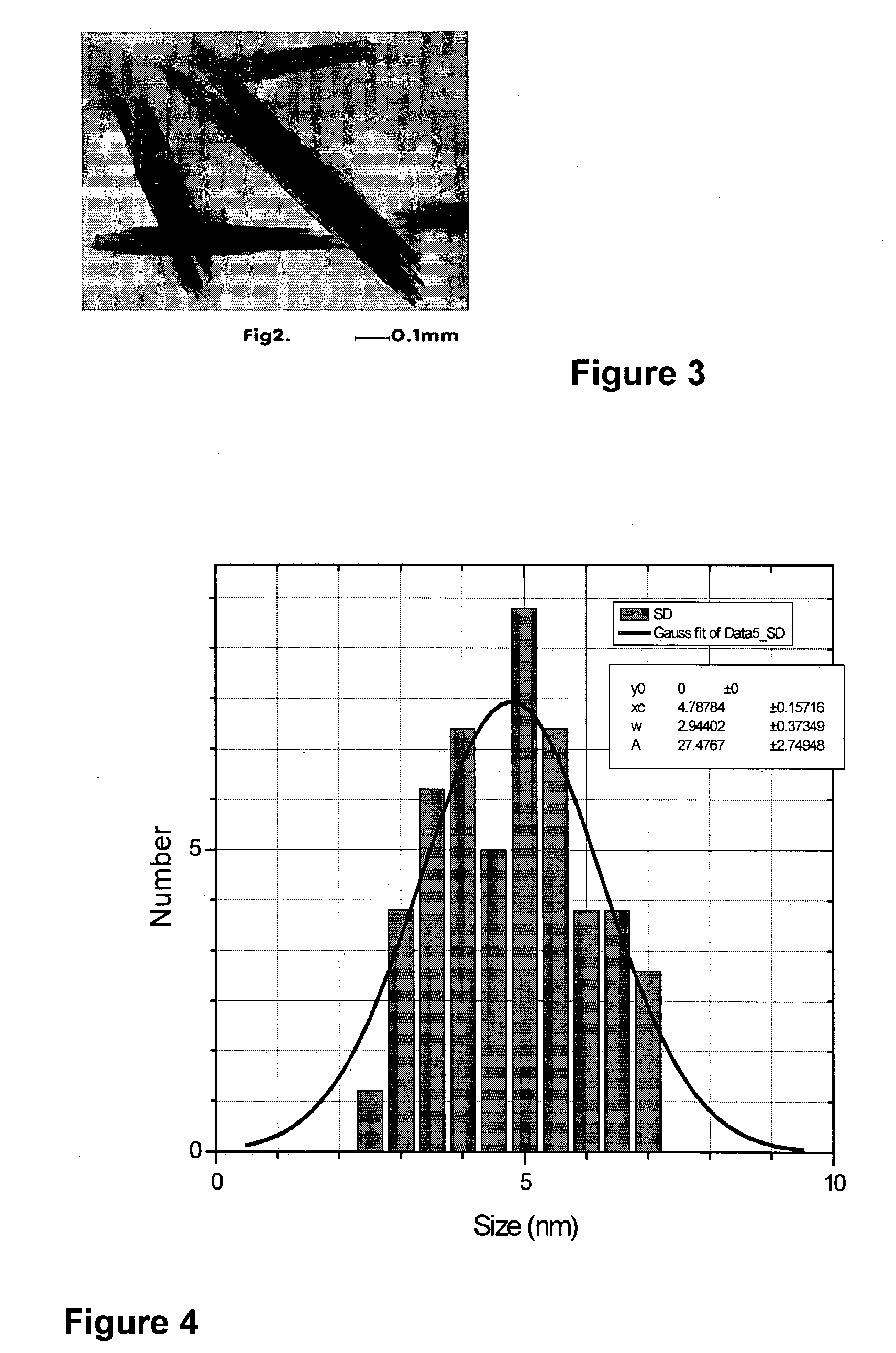Self-aligning QCA based nanomaterials
- Summary
- Abstract
- Description
- Claims
- Application Information
AI Technical Summary
Benefits of technology
Problems solved by technology
Method used
Image
Examples
Embodiment Construction
[0020]We have made QCA-nanophosphors by different chemical processes. These methods are chosen to obtain either nanophosphors as powder or dispersed in a solution for different applications. In powder nanophosphors, the coating on the surface of the nanoparticle is designed to maintain the nanosize and prevent their growth to larger size particles. The nanophosphor is prepared such that it is coated with a thin film on the surface, preventing agglomeration and simultaneously providing passivation of the surface. The surface-passivation leads to high luminous efficiency.
[0021]In the case of a solution dispersed with nanophophors we have chemically modified the surface of the nanophosphors during their preparation by attaching different chemical groups referred as chelating agents or dispersing agents or ligands. The choice of these chemical groups depends on the solvent because the ‘chemical group’ must be compatible with the solvent, otherwise the dispersed nanophosphors will precip...
PUM
| Property | Measurement | Unit |
|---|---|---|
| Size | aaaaa | aaaaa |
| Size | aaaaa | aaaaa |
| Structure | aaaaa | aaaaa |
Abstract
Description
Claims
Application Information
 Login to View More
Login to View More - R&D
- Intellectual Property
- Life Sciences
- Materials
- Tech Scout
- Unparalleled Data Quality
- Higher Quality Content
- 60% Fewer Hallucinations
Browse by: Latest US Patents, China's latest patents, Technical Efficacy Thesaurus, Application Domain, Technology Topic, Popular Technical Reports.
© 2025 PatSnap. All rights reserved.Legal|Privacy policy|Modern Slavery Act Transparency Statement|Sitemap|About US| Contact US: help@patsnap.com



